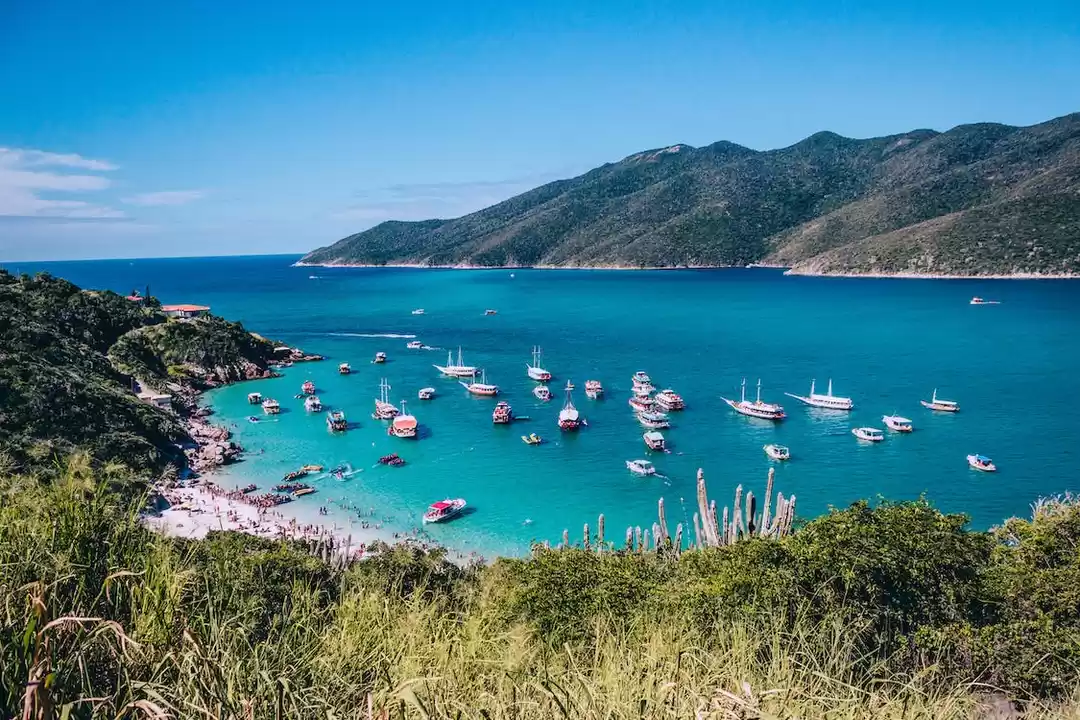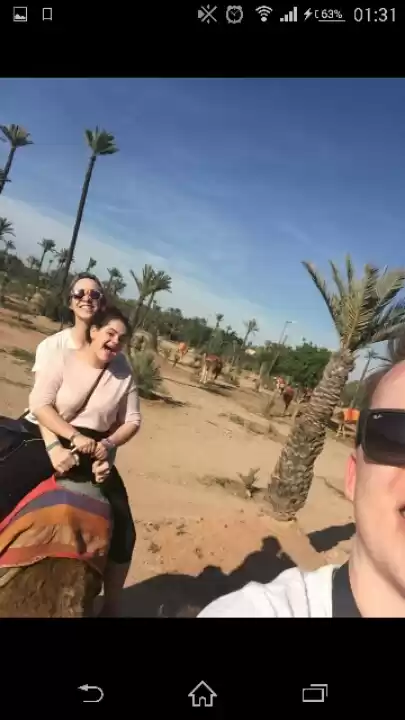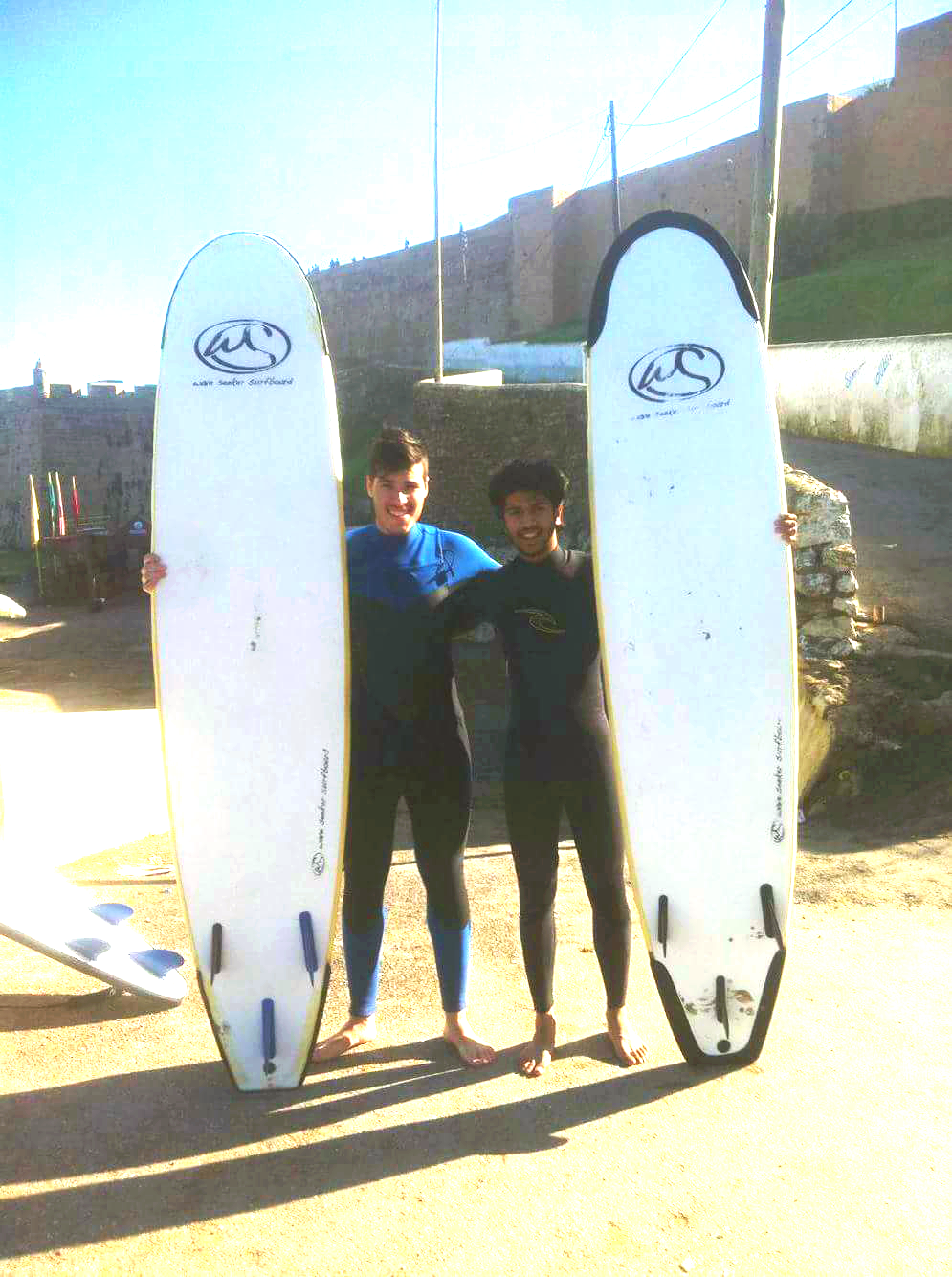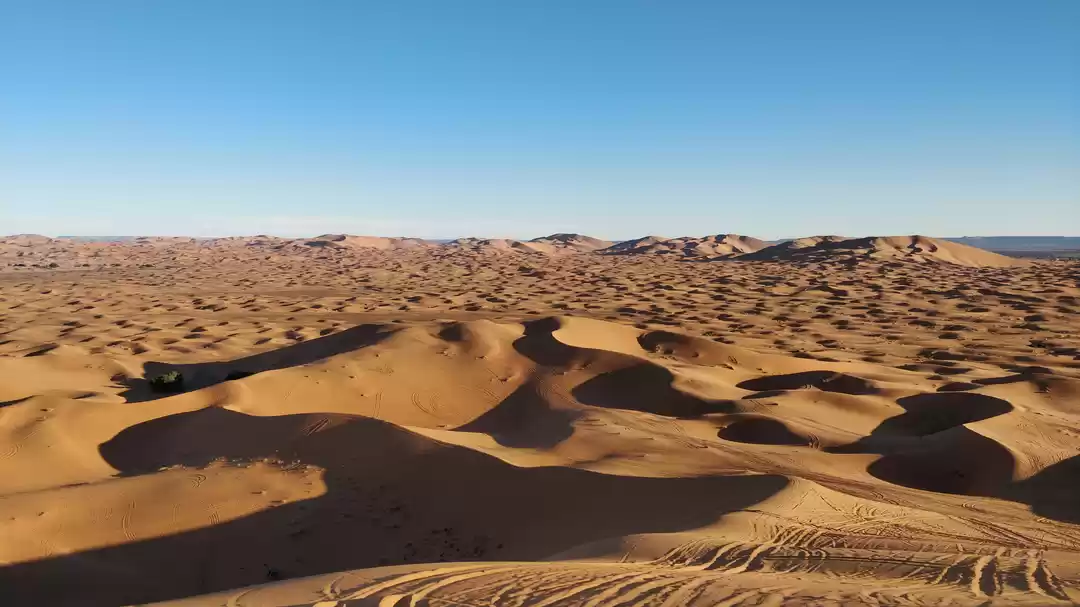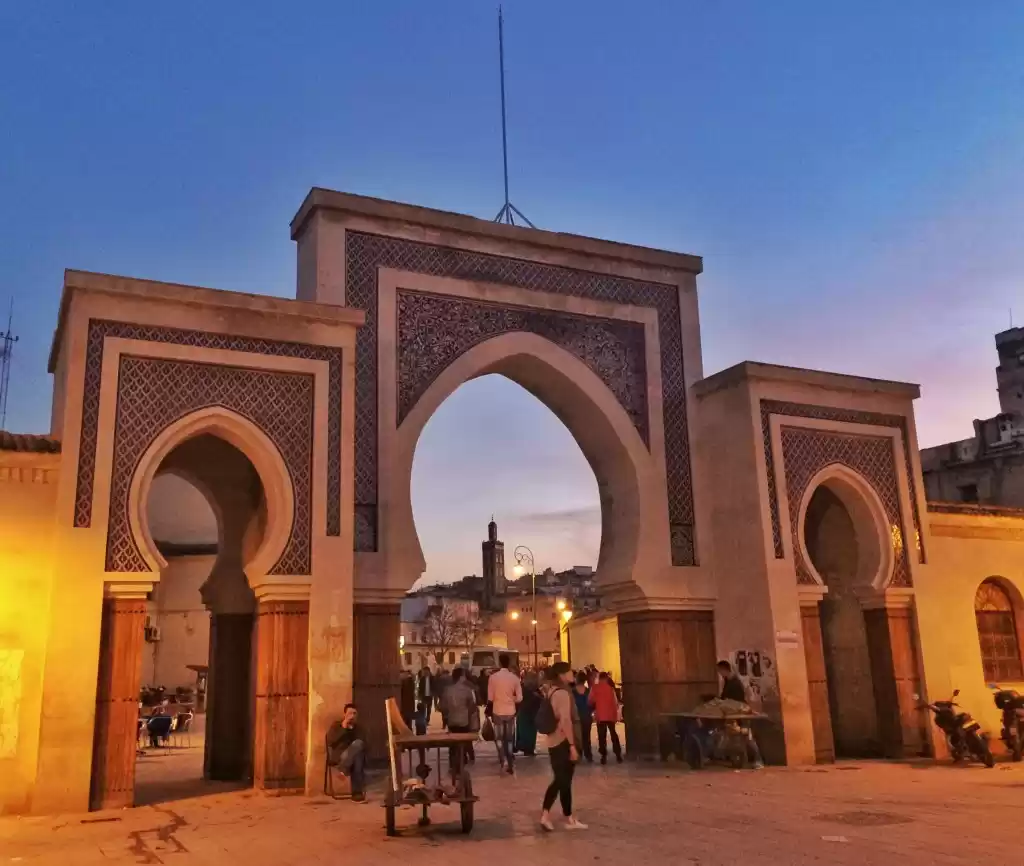



Over the hills and far away in the Rif Mountains of Morocco, there is a magical place called Chefchaouen. It’s Morocco’s “Blue Pearl”. The walls of this city are covered in blue hues from a palate that ranges from royal blue to baby blue and everything in between.

The reason behind all the blue paint? History says former Jewish refugees in the 1930’s were the first to take the blue to the walls. Now, locals touch up the blue paint on the facades of their homes and business to keep up with tradition, and maybe to keep away the mosquitoes, too.

Chefchaouen was my first taste of Morocco, and it was a swift rush to all of my senses. If I had to choose one of the five senses to illustrate Chefchaouen, it would be sight. My eyes kept darting around in wonder as soon as the taxi made its way down the main road toward the old city. All I could think to myself was: this place is too beautiful to be real.

If you’re looking for a specific place, you’ll get lost for hours just trying to find it within the winding pedestrian pathways of Chefchaouen. Each street is flanked with tall, blue walls, making it difficult to discern up from down and north from south. Situated on a mountain, Chefchaouen’s pathways hug its curves. From the pathways higher up the mountain, you can catch glimpses of the hills in the distance that look like they go on forever.

Chefchaouen is best discovered with the true destination being to just walk the streets and purposely get lost in the pathways. I’d seen the photos of the Moroccan city nicknamed the “Blue Pearl”, but I didn’t grasp the visual appeal of it until I was in side the walls of the old city, watching the brushstrokes of the locals as they touched up light areas on their walls with more paint. I wanted to follow every pathway and open every door; I was so curious to see what was behind the blue facades.

The doors, the walkways, everything looks slightly similar, but there is a uniqueness that could go unnoticed unless you stop to take a closer look. The designs of the tiles bordering the doors and on the stairs, the shading of light blue transitioning into dark blue on the facade of a building – each decorative decision was made with a precise eye for detail. Chefchaouen is small, but even walking the same streets multiple times doesn’t get boring.

A surprising thing that struck me was the temperature. In the sun, it’s warm, almost hot. It baffled me that the local men walked around wearing thick cloaks with hoods called djellabas that nearly touched the floor. The cloaks reminded me of those from the film The Village, and seemed completely unnecessary to me.

As I explored during my first stroll around the city in the evening, the reason for the cloaks suddenly became clear. Once the sun goes down, it gets very cold. The tall walls of the buildings cast long shadows, so even during the day you can feel a slight chill in the air even though it’s sunny. It may feel cool in the shadows, but they really accentuate the beauty of Chefchaouen. Light bounces off parts of the walls and highlights all shades of blue that it was painted with.

The small streets also bring forth many smells. I found myself catching a whiff of a scent wafting through the air and doubling back to peer into doorways and see what I had missed. I watched a man as he removed freshly baked khobz, from the oven, ready to take to the local vendors. His job is very important; khobz is eaten with just about every meal in Morocco. I had my fair share while tasting the street food in Fes and everywhere else in Morocco, but still I would go back for more.

Food wasn’t the only aroma that had me stopping in my tracks. I passed by a shop filled from top to bottom with different scented powdery cubes of perfume and soap. It was the sweetest aroma I had smelled in a long time. When I stepped inside, I picked up every colored cube at a table and smelled them all. I couldn’t help myself! In the rest of my travels in Morocco, I never found another perfume and soap shop as beautiful as that one.

Watching the sunset over Chefchaouen from the Atlas Hotel was a stunning sight to remember. The call to prayer just began playing as the sun made its way behind the mountains. For the first time, the blue colors I’d seen all day started to fade. The sky illuminated with yellow and orange watercolors. The city was so calm and serene from up above.

So what makes Chefchaouen tick? I don’t know how to describe it. Maybe it’s because it was the first glimpse of Morocco I had, but Chefchaouen was one of the most beautiful places I’ve ever been to. It felt so pure, like it wasn’t trying to impress anyone, but it was impossible not to.

If you ask me, there’s magic within those walls and behind those doors.


